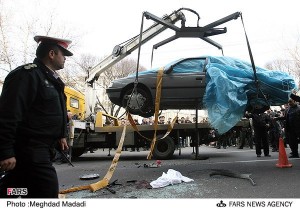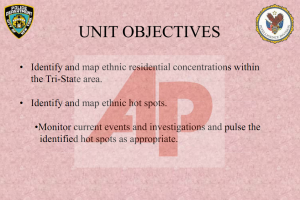Last week, I noted that the NYPD–the same NYPD that had trumped up a “terrorist attack” against a synagogue last year–was calling the New Year’s Day attack on a Queens mosque a “hate crime.”
For the sake of consistency, I wanted to note that very similar attacks–Molotov cocktails thrown at houses of worship, in this case, synagogues–were also being called “hate” or “bias crimes” this week. This, from an FBI that has also entrapped people as terrorists with plots to attack a synagogue.
Now, to some degree, I think the FBI is operating on the same logic as the NYPD–by calling this a bias crime, they don’t hurt their “success rate” at finding and preventing terrorist attacks. I also think both agencies are suggesting that a kid entrapped to say he’d like to use more dangerous explosives (provided, often, by the FBI) is more dangerous than someone who actually acts on his own with whatever improvised explosive–a Molotov cocktail–he can procure without the assistance of an FBI informant. The FBI’s involvement seems to be the most dangerous aspect, according to that logic.
But that doesn’t explain the FBI’s logic for sending out this email update, titled, “2011 MLK Day Hate Crime Prevented; Case Solved,” and boasting that it was a “prototypical hate crime.
“Clearly he intended to detonate the device, cause mass carnage, and then survey the devastation,” said Special Agent Frank Harrill, who supervised the investigation. “Harpham was acting out against what he termed multiculturalism, but his hatred was firmly rooted in violent white supremacy. This was a prototypical hate crime.”
Kevin Harpham’s attempt to bomb last year’s MLK Day Parade in Spokane, WA, is surely a hate crime.
But it also clearly fits the definition of terror, particularly given that Harpham plead guilty to Attempted Use of a WMD, one of the government’s favorite charges for terrorists. The release even has a call-out describing what a sophisticated weapon Harpham had constructed for the attack, specifically calling it a WMD.
Kevin Harpham had been an artilleryman in the Army, and the bomb he meticulously constructed—using 128 fishing weights for shrapnel, each coated with an anticoagulant commonly found in rat poison—was not a typical improvised explosive device (IED).
“JTTF members on this investigation have had experience on many other bombing cases both here and abroad,” said Special Agent Joe Cleary, who worked alongside other agents, evidence technicians, and intelligence analysts on the Harpham case. “But none of us had ever seen this type of bomb in the U.S.”
Cleary explained that most IEDs are triggered with fuses or timers. “This was command-detonated,” he said. “Harpham designed it so he could remotely control when the blast would occur and the direction in which the shrapnel would fly. He placed the bomb so it would explode directly across the line of the march, thereby inflicting maximum damage to the marchers. This was a weapon of mass destruction.”
When bomb experts from the FBI Laboratory reconstructed the device and detonated it, the results were sobering, Cleary said. “The shrapnel exploded with such a high velocity that some targets in the shape of humans were blown over, and a metal filing cabinet was perforated—it was filled with holes.”
“Harpham intended to use this extremely lethal weapon on individuals solely because of their race and perhaps their religion,” Cleary said. “His plan was to wreak havoc on a crowd of innocents.” [my emphasis]
Harpham’s crime–an attempt to bomb a public space with a “WMD” thwarted by a diligent onlooker–is almost a mirror image for Faisal Shahzad’s Time Square bombing, except that Harpham’s bomb was more competent and lethal, and the timing of Harpham’s attack was tied to a political motivation.
So why boast of this successful hate crime conviction when the kudos in this country go to successful terrorism convictions?
One more thing. In its description of the FBI’s (very admirable) investigation, it notes this discovery:
Investigators also learned of Harpham’s white supremacy postings on the Internet and his affiliation with a neo-Nazi group called the National Alliance.
TPMM describes some of what those postings say here.
Update: And here’s a collection of them from his sentencing report. Note, for example, the one on PDF 6 that says, in a thread on “your favorite part of the Turner Diaries,”
In the army my lieutenant told me Tim McVey read the Turner Diaries and that there was a blueprint for a truck bomb in it. After I was out of the service and was getting to the point of advanced anti-government libertarianism, I bought the book and when I was finished I was extremely disappointed that there was no plans for a bomb inside.
But then later, it claims,
“Kevin Harpham was the lone wolf that all of us in law enforcement dread,” Harrill said. “He lived alone and he worked alone, and he didn’t foreshadow the bombing plot in any meaningful way.
Harpham foreshadowed his extremism, at least, the same way all the Muslim young men the FBI entraps did–in online chat rooms. What he didn’t do is exhibit his extremism in a form the FBI routinely investigates.



